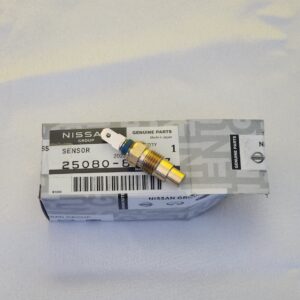A knock sensor is typically a piezoelectric sensor mounted on the engine block or cylinder head. The sensor is designed to detect the high-frequency vibrations caused by engine knocking and convert them into an electrical signal.
When the engine runs, the knock sensor is constantly monitoring for any signs of an engine knock. When it detects a knocking sound, the sensor sends a signal to the ECM. The ECM then uses this signal to adjust the ignition timing to prevent further engine knocks from occurring.
To analyze the signal, the ECM uses a microprocessor and some algorithms; these are used to filter and process the sensor signal to determine if it’s a knock or not, and if it is a knock, the ECM will adjust the ignition timing accordingly.
Knock sensors are only one of several sensors used by the ECM to optimize the engine’s performance. The ECM also relies on sensors like Throttle Position Sensor, MAF, Oxygen sensor, and others.
In stock (can be backordered)
$18,926.31
A knock sensor is typically a piezoelectric sensor mounted on the engine block or cylinder head. The sensor is designed to detect the high-frequency vibrations caused by engine knocking and convert them into an electrical signal.
When the engine runs, the knock sensor is constantly monitoring for any signs of an engine knock. When it detects a knocking sound, the sensor sends a signal to the ECM. The ECM then uses this signal to adjust the ignition timing to prevent further engine knocks from occurring.
To analyze the signal, the ECM uses a microprocessor and some algorithms; these are used to filter and process the sensor signal to determine if it’s a knock or not, and if it is a knock, the ECM will adjust the ignition timing accordingly.
Knock sensors are only one of several sensors used by the ECM to optimize the engine’s performance. The ECM also relies on sensors like Throttle Position Sensor, MAF, Oxygen sensor, and others.
| Warehouse | Inventory at warehouse 2 |
|---|


Get E-mail updates about our latest products and special offers.
Sensors and More is Jamaica’s ultimate online auto parts store. Established in 2020, we specialize in genuine electrical parts for Japanese, Read more…
Reviews
There are no reviews yet.